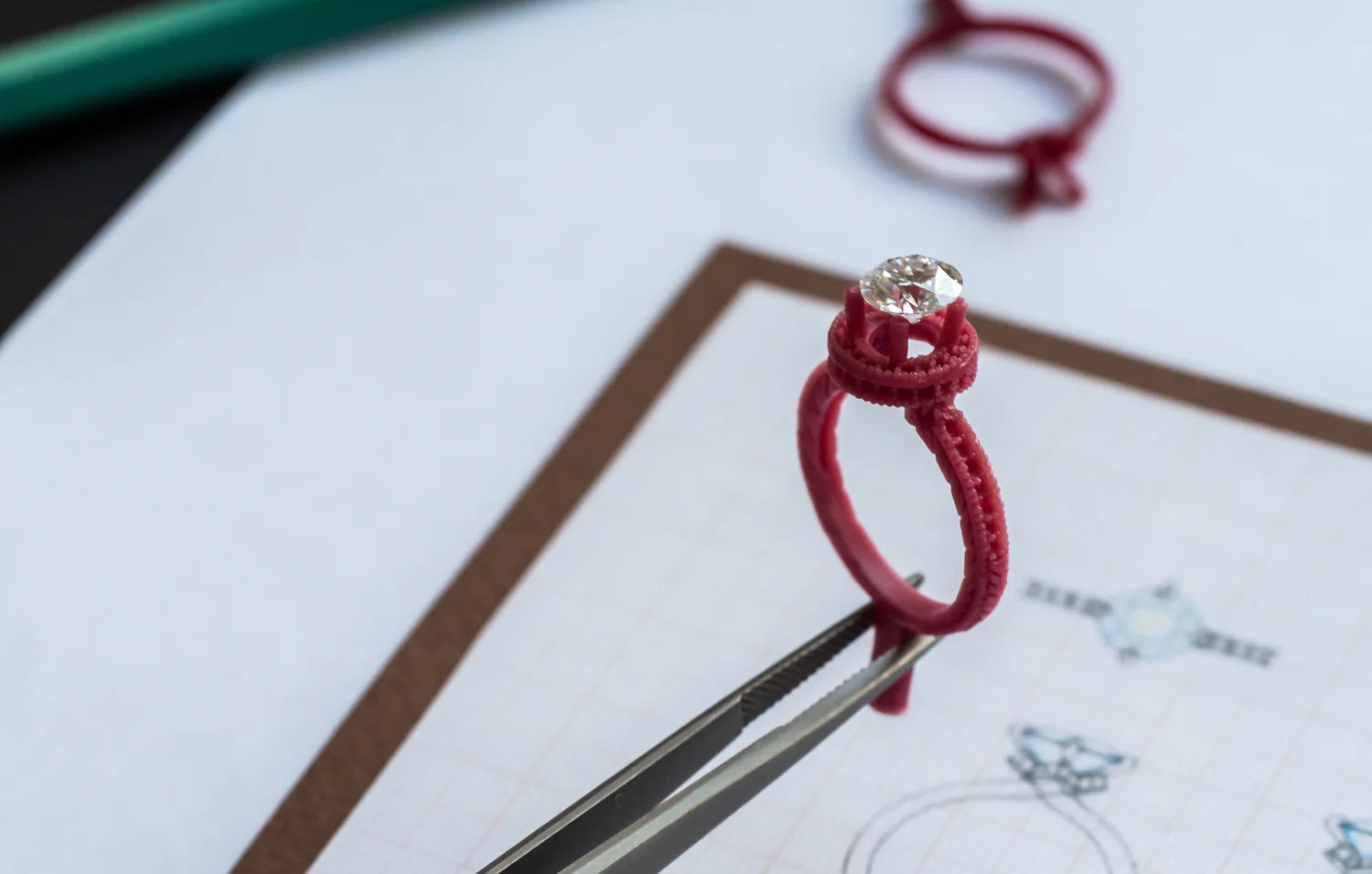1. General Custom Jewelry Repair Services:
Custom jewelry repairs may require more specialized attention, as the piece may have unique design elements, gemstones, or intricate detailing that standard repairs don't address. Some common types of custom jewelry repairs include:
Stone Replacement: If a gemstone in a custom piece has fallen out, cracked, or been damaged, the jeweler will replace it with a similar or upgraded stone. This can involve selecting a stone that matches the original design or creating a new setting for a different type of stone.
Prong Repair or Rebuilding: Custom jewelry with gemstones set in prongs (common for rings or necklaces) may need prong repairs or rebuilding if the prongs have worn down or broken off. The jeweler will carefully rebuild or re-tip the prongs to secure the stone and restore the piece's integrity.
Reshaping or Resizing: Over time, custom pieces may lose their original shape, or the size may need adjustment. A skilled jeweler can resize a custom ring, bracelet, or necklace to fit properly, or reshape it if it has become bent or distorted. For example, resizing a custom ring to a larger or smaller size requires precise work to maintain the design’s overall aesthetic.
Restoring Heirloom Pieces: Custom jewelry often includes family heirlooms or sentimental items. If these pieces become damaged or worn over time, a jeweler will work to carefully restore them while preserving the original design and sentimental value. This might include reworking the setting, replacing missing stones, or re-plating with a new metal finish.
Reworking or Rebuilding a Design: Sometimes, custom jewelry may need significant repairs or modifications if it's been damaged beyond simple restoration. This could involve modifying the design (e.g., updating the setting, adding new elements, or altering the style) to either restore the piece or give it a fresh look while maintaining its uniqueness.
2. Common Custom Jewelry Repair Types:
Some specific repairs related to custom jewelry may include:
Soldering and Welding: If your custom jewelry is broken into two pieces or the links have separated, a jeweler will use soldering or welding to reconnect the parts. This is often used for custom necklaces, bracelets, or rings that have snapped.
Engraving Repairs: Custom jewelry often includes personal engravings. If the engraving becomes worn or faded, a jeweler can re-engrave or restore the original engraving to its full clarity.
Replacement of Unique Components: Custom jewelry can feature special elements such as custom-designed clasps, charms, or settings. If these parts get damaged or lost, they may need to be replaced by a skilled jeweler who can replicate the original component.
Re-setting Stones: If a gemstone becomes loose or damaged, the jeweler may need to remove the stone and reset it, ensuring it is secure and aligned with the overall design of the piece.
3. Restyling Custom Jewelry:
Sometimes, instead of simply repairing a piece of custom jewelry, clients choose to restyle it. This involves taking the existing materials or components (like gemstones, metals, or charms) and creating a new design, often to suit current tastes or lifestyle needs.
Upgrading the Setting: You might have a custom engagement ring or other piece of jewelry that’s outdated in terms of design. A jeweler can upgrade the setting to make it more modern, larger, or more durable without losing the emotional connection to the original piece.
Reusing Gemstones in New Designs: If you have a collection of gemstones from old custom jewelry, they can be reset into a brand-new design that fits your current style.
4. Challenges with Custom Jewelry Repairs:
Design Integrity: One of the challenges with repairing custom jewelry is maintaining the original design. Custom pieces are often unique, and the jeweler must ensure the repairs or modifications preserve the original design, craftsmanship, and aesthetics.
Material Compatibility: Custom jewelry can be made with a variety of metals, gemstones, and materials. For repairs, it's essential to use compatible metals or stones to avoid damage or wear over time. For example, if the piece is made from a rare or specific metal like platinum or palladium, the jeweler must have the right tools and expertise to work with those materials.
Matching Stones and Components: When replacing stones or components, a jeweler may need to match the original look of the piece. This can be tricky if the original gemstones are no longer available, or if the custom components are unique and difficult to replicate.
5. Why You Should Choose a Professional for Custom Jewelry Repairs:
Expertise: Custom jewelry repairs require a high level of skill and expertise. Jewelers who specialize in custom work will have the experience needed to understand the intricacies of unique designs, ensuring the repair is done with precision.
Personalization: Since custom jewelry often holds sentimental value, choosing a jeweler who can work with you to preserve the meaning of the piece is essential. A professional can offer suggestions on how to restore or redesign the jewelry without losing its personal connection.
Quality Materials: Custom jewelry often uses high-quality metals and gemstones. A professional jeweler will ensure that any repairs are done with the same care and quality as the original design, so your piece will look as good as new.
Conclusion:
Whether you need a simple fix or a complete overhaul, custom jewelry repairs are about restoring or maintaining the beauty and integrity of your personalized pieces. If you're considering a repair for a custom piece, working with an experienced jeweler who understands both the craftsmanship and sentimental value of your jewelry is crucial.
Do you have a custom piece you're considering for repair, or are you looking to make any modifications to a special piece of jewelry? Feel free to share, and I can help guide you further!


